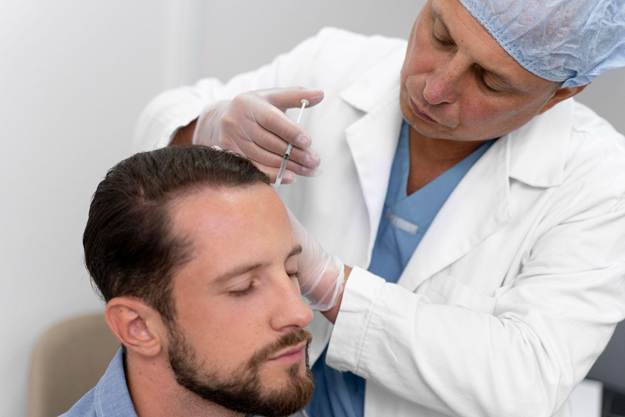
When people hear about scalp micropigmentation (SMP) for the first time, many imagine something like a tattoo. But in reality, SMP is far more advanced, an intricate blend of science, precision, and artistry. At clinics, the goal isn't simply to deposit pigments on the scalp. It’s to recreate the illusion of natural hair growth so precisely that it restores not just appearance, but confidence.
In this article, we explore the science behind natural-looking SMP, uncovering why the right technique and pigment formulation make all the difference between a convincing, seamless result and an artificial one.
Understanding the Foundation: What Makes SMP “Look Natural”
Before diving into pigments and procedures, it’s important to understand what “natural” actually means in the world of SMP.
Why Technique Defines the Outcome for Scalp Micropigmentation
In scalp micropigmentation, technique isn’t just a matter of style; it’s science in motion. Every needle depth, angle, and pigment deposit influences how the final result interacts with the skin’s physiology.
1. Needle Depth and Skin Layers
2. Follicle Pattern Replication
3. Hairline Design and Gradient Control
Technique, therefore, is more than skill; it’s applied anatomy, color theory, and visual psychology combined.
The Role of Pigment Science in Realistic SMP
While technique determines placement, pigment determines perception. The science of pigment formulation in SMP is a field of its own.
1. Specialized Pigment Composition
2. Matching Skin Undertones and Hair Shade
3. Preventing Color Migration and Fading
This level of pigment precision transforms SMP from a cosmetic procedure into a specialized form of dermal artistry.
Why Pigment Choice and Technique Must Work Together
In scalp micropigmentation, perfection lies in the partnership between pigment and technique. Neither element alone can replicate the appearance of living follicles; it is the combination of scientific accuracy and artistic control that produces genuinely natural outcomes.
According to the National Institutes of Health, advancements in cosmetic dermatology emphasize the importance of pigment biocompatibility and procedural accuracy in achieving safe, lasting outcomes. A flawless result from scalp micropigmentation depends on how these two forces, chemistry and craftsmanship, interact at every stage of the procedure, ensuring both aesthetic realism and skin health.
The difference between a good SMP treatment and an exceptional one is rarely visible in the first session; it emerges over time as pigment chemistry and application precision harmonize with the skin’s healing behavior.
Every treatment is treated as a scientific collaboration between biology, technology, and artistry. Their process extends beyond application; it’s about predicting outcomes, adapting to individual physiology, and ensuring the results evolve naturally over years, not months.
This scientific discipline is grounded in three pillars of expertise:
In that balance between chemistry and craft, science and intuition, lies the art of natural scalp micropigmentation.
It’s not a cosmetic illusion; it’s a biologically informed design built to stand the test of time.
How SMP Technology Continues to Evolve for Scalp Micropigmentation
Scalp micropigmentation is advancing rapidly, and much of its progress comes from innovation in equipment and pigment technology.
Clinics at the forefront stay ahead by integrating research-backed tools and consistently training their technicians on these evolving standards.
Setting the Standard for Safe, Long-Lasting SMP
Natural-looking SMP is not the product of marketing; it’s the outcome of science, training, and ethics. At its best, SMP enhances someone’s self-image without ever revealing itself as a procedure.
Here’s what defines excellence in modern SMP care:
By holding these standards, clinics should ensure clients receive results that endure both aesthetically and emotionally.
Final Thoughts: The Art of Invisible Confidence
The science behind scalp micropigmentation may be technical, but its purpose is deeply human: to help people see themselves with confidence again. The difference between an average and a remarkable SMP treatment often lies in invisible details: the right pigment depth, the perfect gradient, and the subtle irregularity that mimics nature.
In that sense, SMP isn’t just cosmetic; it’s restorative. It brings back a sense of self that many lose to hair loss. And when guided by expertise, precision, and care, it becomes a lasting work of art on the most personal canvas of all, the human scalp.